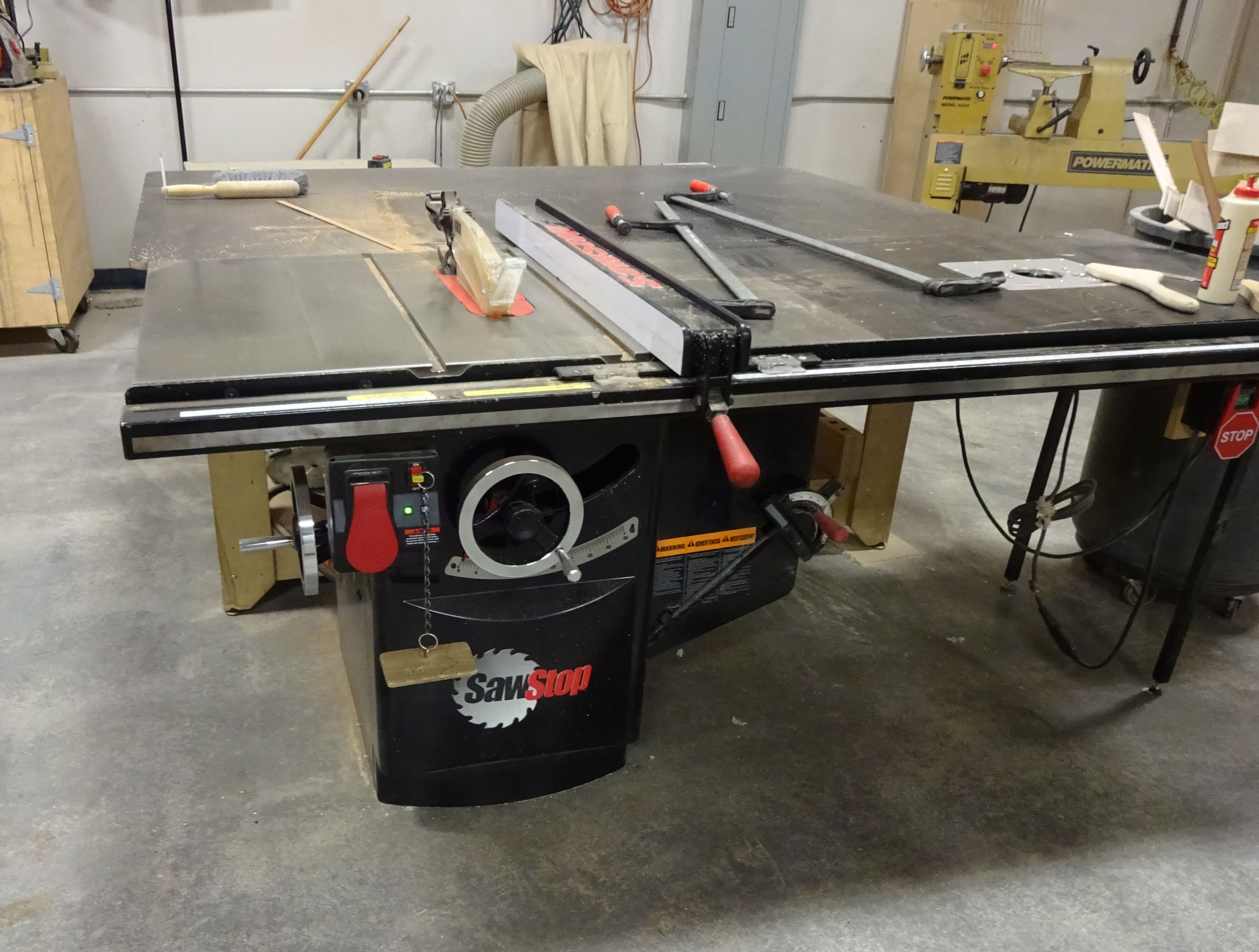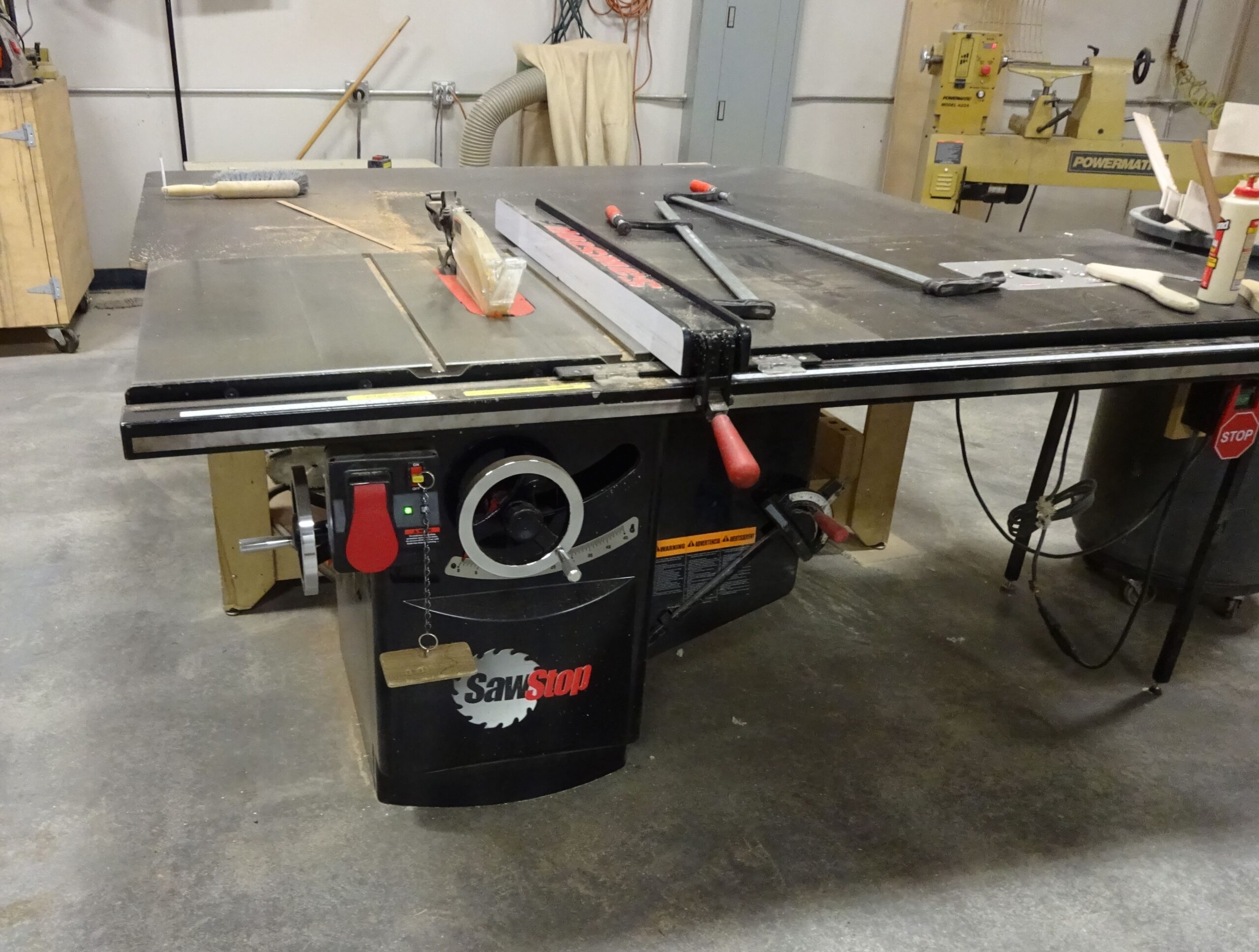When it comes to woodworking, a table saw is one of the most essential tools in any workshop. But what does a table saw actually do? Well, let me break it down for you in a simple and easy-to-understand way.
Firstly, a table saw is like the MVP (Most Valuable Player) of woodworking tools. It’s a powerful machine that allows you to make precise cuts in wood with ease. Whether you need to rip long boards or make intricate crosscuts, a table saw has got your back.
Think of a table saw as a stationary blade that protrudes from the surface of a table. You place the wood on the table, adjust the blade height and angle, and then guide the wood through the blade to make your cut. It’s like having a super sharp, super precise guillotine for your woodworking projects.
So, whether you’re building furniture, crafting cabinets, or tackling any woodworking project, a table saw is an indispensable tool that will help you achieve accurate and professional-looking results. Get ready to unleash your creativity and let’s dive into the world of table saws for woodworking!

What Does a Table Saw for Woodworking?
The world of woodworking is full of a variety of tools, each serving a specific purpose. One such essential tool is the table saw. A table saw is a powerful and versatile tool that is designed to make cutting wood easier and more efficient. It consists of a circular saw blade mounted on an arbor, which is driven by an electric motor. The blade protrudes through a slot in a flat surface, known as the table. The table provides support for the wood being cut and helps ensure accurate and precise cuts.
Key Features of a Table Saw
A table saw comes with a range of features that make it a must-have tool for woodworking enthusiasts. Here are some key features and components you can expect to find on a typical table saw:
1. Motor: The motor is the heart of the table saw, as it powers the rotation of the saw blade. Table saws usually have motors ranging in power from 1.5 to 5 horsepower. The higher the horsepower, the more powerful the saw, allowing for smoother and faster cuts through different types of wood.
2. Blade: The saw blade is another critical component of a table saw. It typically has a diameter of 10 to 12 inches and is available in different types and tooth configurations, depending on the specific woodworking task. Blades with more teeth are ideal for making fine and precise cuts, while blades with fewer teeth are better suited for rough cutting.
3. Rip Fence: The rip fence is a guide that runs parallel to the saw blade. It helps maintain a consistent cutting width and ensures straight and accurate rip cuts. The rip fence can usually be adjusted to accommodate different sizes of stock.
4. Miter Gauge: The miter gauge is a device that allows for the rotation and adjustment of the wood being cut at various angles. It is essential for making crosscuts, bevel cuts, and angled cuts.
With these key features, a table saw provides woodworkers with the ability to make a wide range of cuts, from simple crosscuts to complex angled cuts.
The Benefits of Using a Table Saw
1. Versatility: The table saw is highly versatile and can be used for various woodworking tasks. It can make straight cuts, bevel cuts, miter cuts, and even dado cuts. This versatility makes it an invaluable tool for both beginner and experienced woodworkers.
2. Accuracy: A table saw provides exceptional accuracy and precision in cutting wood. The flat table surface and the guides, such as the rip fence and miter gauge, ensure that the cuts are straight and consistent. This accuracy is crucial when working on projects that require precise measurements and fitting.
3. Efficiency: With a table saw, woodworkers can cut through stock more efficiently and quickly compared to using handheld tools like a circular saw. The stability of the table and the ability to use both hands to guide the material result in faster and more efficient cutting.
4. Safety: Table saws are designed with safety features to protect the user from potential accidents. These features can include blade guards, anti-kickback mechanisms, and emergency stop switches. While it is important to always follow proper safety procedures when operating any power tool, the added safety features of a table saw provide an extra layer of protection.
Using a table saw in woodworking projects offers numerous benefits, from increased accuracy and versatility to improved efficiency and safety. Whether you’re a professional woodworker or a DIY enthusiast, a table saw is an indispensable tool that can take your woodworking skills to the next level.
Choosing the Right Table Saw for Your Woodworking Needs
Choosing the right table saw is crucial to ensure that it meets your specific woodworking needs. Here are some factors to consider when selecting a table saw:
1. Power and Motor Size: Consider the power and motor size of the table saw. The horsepower of the motor will determine the cutting capacity and the types of materials you can work with.
2. Blade Size and Type: Determine the blade size and type that will best suit your woodworking requirements. Smaller blades are suitable for finer cuts, while larger blades are better for thicker materials.
3. Table Size and Stability: The size of the table will determine the size of the material you can work with. It is also important to ensure that the table is stable and sturdy to prevent vibrations during cutting.
4. Safety Features: Check for safety features such as blade guards, anti-kickback mechanisms, and emergency stop switches. These features are essential in preventing accidents.
5. Price and Budget: Determine your budget and compare the prices of different table saw models. Consider the features and capabilities of each model to ensure you get the best value for your money.
By considering these factors, you can find a table saw that suits your woodworking needs and helps you achieve accurate and precise cuts.
Caring for Your Table Saw: Maintenance Tips
To keep your table saw in optimal condition and ensure its longevity, regular maintenance is necessary. Here are some maintenance tips to follow:
1. Keep the Table Clean: Regularly clean the table surface, removing dust and debris that can affect the accuracy of your cuts.
2. Check the Blade: Inspect the blade for any signs of damage or dullness. Replace the blade if necessary to ensure clean and precise cuts.
3. Lubricate Moving Parts: Apply lubricant to the moving parts, such as the arbor, to ensure smooth operation.
4. Check Safety Features: Periodically inspect the safety features of the table saw to ensure they are functioning correctly.
5. Align the Blade and Fence: Check and adjust the alignment of the blade and rip fence to maintain accurate cuts.
By following these maintenance tips, you can prolong the life of your table saw and ensure that it continues to deliver consistent and precise cuts.
Conclusion
A table saw is an essential tool for any woodworker, whether you’re a beginner or an expert. It offers versatility, accuracy, efficiency, and safety in cutting wood, making it a must-have tool in any woodworking shop. By understanding the key features of a table saw, choosing the right one for your needs, and maintaining it properly, you can enhance your woodworking skills and achieve the best results in your projects. Invest in a quality table saw and unleash your creativity in the world of woodworking.
Key Takeaways: What Does a Table Saw for Woodworking?
- A table saw is a powerful woodworking tool used for cutting wood and other materials.
- It consists of a circular saw blade mounted on an arbor that protrudes through a tabletop.
- The blade can be adjusted in height and angle to make precise cuts.
- Table saws have various safety features, such as blade guards and kickback prevention systems.
- They are versatile and can be used for a wide range of woodworking projects.
Frequently Asked Questions
Are you curious about what a table saw can do for your woodworking projects? Look no further! We’ve compiled some frequently asked questions about table saws and their capabilities to help you gain a better understanding.
Q: How does a table saw enhance woodworking?
A: A table saw is a powerful tool that serves as the backbone of many woodworking projects. It allows for precise and straight cuts in various materials, including wood, plywood, and even metal. With its versatile features, a table saw can be used to create intricate joinery, make accurate rip cuts, create beveled edges, and execute miter cuts with ease. Whether you’re building furniture, constructing cabinets, or undertaking DIY projects, a table saw is an invaluable asset in any woodworker’s arsenal.
Its blade can be adjusted in height and angle for cutting grooves, dados, and rabbets, enabling you to create stronger, more complex joints. Furthermore, by using different types of blades, such as dado and crosscut blades, you can widen the range of tasks your table saw can handle. From simple cuts to more intricate designs, a table saw offers precision and efficiency in woodworking.
Q: Can a table saw be used for cutting materials other than wood?
A: Absolutely! While primarily designed for woodworking, a table saw can also handle cutting other materials, including plastics, laminates, and even non-ferrous metals like aluminum and brass. With the appropriate blade and setup, a table saw can achieve clean and accurate cuts in these materials as well. However, it is important to note that certain safety precautions and specific blades should be used depending on the material being cut to ensure optimal results and prevent any potential hazards.
It’s always recommended to consult the manufacturer’s guidelines and use the appropriate safety equipment, such as goggles and face masks, when working with materials other than wood. Additionally, make sure to select a blade with the appropriate number of teeth, tooth geometry, and material suitability for the specific material you intend to cut on the table saw. This ensures both safety and the highest quality of workmanship.
Q: What safety measures should be taken when using a table saw?
A: Safety should always be a top priority when operating a table saw or any power tool. To ensure your well-being, follow these essential safety measures:
1. Always wear appropriate personal protective equipment (PPE), including safety goggles, ear protection, and a dust mask.
2. Keep your work area well-lit and free of clutter.
3. Make sure the blade guard and riving knife are properly installed and adjusted.
4. Use a push stick or push block to guide the material through the blade, keeping your hands a safe distance away from the blade at all times.
5. Never remove the blade guard or attempt any modifications to the saw that may compromise safety.
6. Disconnect the power and wait for the blade to come to a complete stop before making any adjustments or changing the blade.
7. Always unplug the saw when it’s not in use and keep it out of the reach of children or unauthorized users.

Summary
A table saw is a powerful tool used in woodworking to cut various materials. It consists of a circular blade mounted on a flat surface, with an adjustable fence for precision. The blade spins very fast and can cut through wood, plastic, and even metals. It is important to wear safety gear and follow proper techniques when using a table saw.
Table saws come in different sizes and have various features, such as adjustable blade angles and ripping capacities. They are commonly used in woodworking shops and construction sites to make straight and accurate cuts. By understanding how to use a table saw safely and effectively, you can create beautiful and precise projects in your own woodworking journey.
